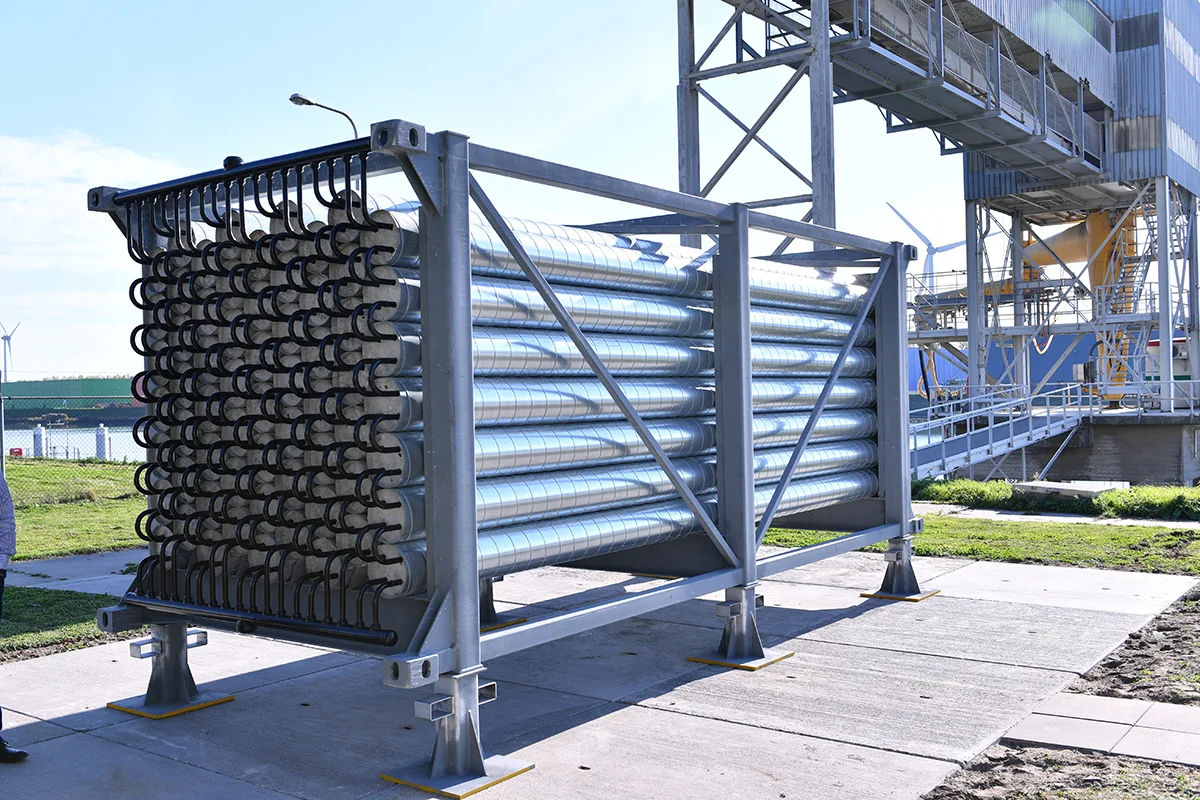
How will we store the power of the future? Thermal batteries
The transition toward renewable energy took another step forward last month due to advancements in a novel type of battery.
Researchers at the Massachusetts Institute of Technology (MIT) and the National Renewable Energy Laboratory established a boost in efficiency in deriving electricity from a thermal battery, which stores energy in the form of heat.
The development may be a game changer for the future of solar and wind power. Because energy demand may be highest when solar power goes dormant overnight, or wind turbines stall in a calm, some form of energy storage system is necessary to maintain a smooth and reliable power supply from these key renewable sources.
While there is promise in the lithium-ion (Li-ion) battery — which is widely used in electric vehicles and cellphones, and already a storage option for some power grids — there remain various drawbacks to the Li-ion technology.
The lithium required for Li-ion batteries is predominantly mined in South America using extremely water-intensive practices that are damaging to local ecosystems; and another important material — cobalt — is mostly derived from unstable regions like the Democratic Republic of Congo, prompting concerns over disruptions in the supply-chain.
And though the cost of Li-ion batteries have plunged over the past decade, they remain prohibitively expensive in the event of a complete overhaul of the energy system — which is the aim of net-zero proponents.
Cue the thermal battery.
A thermal battery can use the excess energy produced on clear, windy days to heat up certain materials to extremely high temperatures. That stored heat is then released as needed and converted into electricity.
“Thermal batteries are essentially large rechargeable batteries for the utility grid,” Professor Asegun Henry, an MIT mechanical engineer involved with the research, explained to The Weather Network (TWN).

Professor Asegun Henry stands in his MIT laboratory. (Ryuji Suzuki)
“Their purpose is to be able to store an excess of renewable energy, when the weather is favourable, that can be discharged back to the grid when there is demand,” Henry added.
“They work by converting electricity to extremely high temperature heat that is transported by liquid metal, and stored in cheap graphite blocks. The blocks hold the heat until there’s demand on the grid.”
The first thermal battery came online in 2018 when the South Australian company CCT Energy Storage switched on its thermal energy device (TED).
The TED works by using excess energy to heat silicon until it arrives at its “phase change point.” At this critical point, “when further energy is applied it does not increase the temperature, but causes the substance to change from a solid to a liquid or gas.”
This energy, generated from the phase change, can be stored at “more than 12 times the energy density of a lead acid battery,” according to CCT Energy.
Other thermal battery technology includes a system designed by the Swedish company Texel, which the company claims contains no rare earth elements, is fully recyclable, and has no degradation issues.
There are also projects by the Norwegian start-up EnergyNest, in which excess heat from steel or concrete plants is stored and reused.

EnergyNest says its thermal battery technology is modular, flexible, scalable, and built for purpose. (EnergyNest)
Meanwhile, the research at MIT involves the component that converts photons emitted from the source of the heat into electricity. This “thermophotovoltaic” (TPV) works like a photovoltaic cell in a solar panel, which turns the sun’s rays into electricity.
“The energy is transferred using liquid metal to a TPV converter. The TPV converts some of the light emitted by the glowing white hot piping back to electricity, which then goes to the grid,” Henry explained.
The work of Henry and his colleagues has resulted in a huge boost in efficiency of the TPV technology, from the former high of 32 per cent to over 40 per cent in the MIT tests. This efficiency jump narrows the gap with Li-ion batteries, making the tech a legitimate — and far cheaper — alternative to Li-ion.
“The main advantage of thermal batteries is their cost,” Henry said. “Grid scale lithium-ion batteries cost more than $300/kWh, while thermal batteries are expected to cost less than $10/kWh, which is cheap enough to enable a fully renewable grid.”

Researchers at MIT and the National Renewable Energy Laboratory (NREL) plan to incorporate a thermophotovoltaic (TPV) cell, similar to a solar panel’s photovoltaic cells, into a grid-scale thermal battery. (Felice Frankel)
Although Henry sees the transition of the global power grid as a multi-decade endeavour, the time for thermal is now.
“It is the critical piece,” Henry said. “Solar and wind are cheap enough. We just need cheap storage to enable full replacement of fossil fueled power plants.”
He added, “I believe our technology will be the answer.”
Thumbnail Image: Steel pipes running in and out of long cylinders of 'Heatcrete' make up EnergyNest's thermal battery. (EnergyNest)






